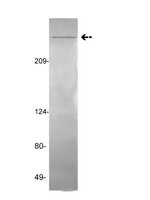Von Willebrand factor.
Ruggeri, Zaverio M
Curr. Opin. Hematol., 10: 142-9 (2003)
2003
Mostra il sommario
The adhesive protein von Willebrand factor contributes to platelet function by mediating the initiation and progression of thrombus formation at sites of vascular injury. In the last 2 years, there has been considerable progress in explaining the biologic properties of von Willebrand factor. The three-dimensional structure of specific domains has been explained, with the demonstration of distinct conformational changes in the A1 domain caused by single amino acid substitutions associated with enhanced binding to platelets. The structural and functional properties of the interaction between the von Willebrand factor A1 domain and glycoprotein Ibalpha have also been elucidated in greater detail, bringing researchers closer to understanding how this adhesive bond can oppose the fluid dynamic effects of rapidly flowing blood to initiate thrombus formation and, concurrently, contribute to platelet activation. Because hemodynamic forces greatly influence platelet responses to vascular injury in stenosed and partially occluded arteries, a detailed description of how von Willebrand factor interacts with tissues and platelets may help in the design of more specific therapeutic inhibitors of arterial thrombosis. Moreover, enlightening findings have been obtained on the link between regulation of von Willebrand factor multimer size and microvascular thrombosis. This progress in basic research has provided critical information to define with greater precision the role of von Willebrand factor in vascular biology and pathology. | 12579041
 |
Shear stress and von Willebrand factor in health and disease.
Tsai, Han-Mou
Semin. Thromb. Hemost., 29: 479-88 (2003)
2003
Mostra il sommario
Blood flow in the circulation creates shear stress that affects cell functions and cell-cell interactions. Recent studies reveal that shear stress is also critical in the homeostasis of the plasma glycoprotein von Willebrand factor (vWF). Because of its large molecular size, vWF has a flexible conformation that is uniquely responsive to shear stress. Exposure to shear stress causes conformational unfolding of vWF, enhancing its susceptibility to cleavage by a plasma zinc metalloprotease (a disintegrin and metalloprotease with thrombospondin type 1 motif [ADAMTS13]). In the absence of ADAMTS13, shear stress increases the capacity of vWF to support platelet aggregation. In normal individuals, a balance between endothelial secretion of an ultralarge form of vWF and intravascular proteolysis determines the size distribution of vWF multimers that seems to be optimum for hemostasis without imposing the risk of unwarranted platelet aggregation. In type 2A (group 2) von Willebrand disease, the mutant vWF is excessively susceptible to cleavage by ADAMTS13, resulting in a decrease of large vWF multimers and bleeding diathesis. In patients with aortic stenosis or the hemolytic-uremic syndrome, abnormally high levels of shear stress across the stenotic valve or in the microcirculation inflicted with thrombosis may promote cleavage of vWF by ADAMTS13, contributing to the loss of large multimers commonly observed among these patients. Conversely, a deficiency in ADAMTS13 because of genetic mutations or autoimmune inhibitors causes vWF- and platelet-rich microvascular thrombosis characteristic of thrombotic thrombocytopenic purpura. | 14631548
 |










